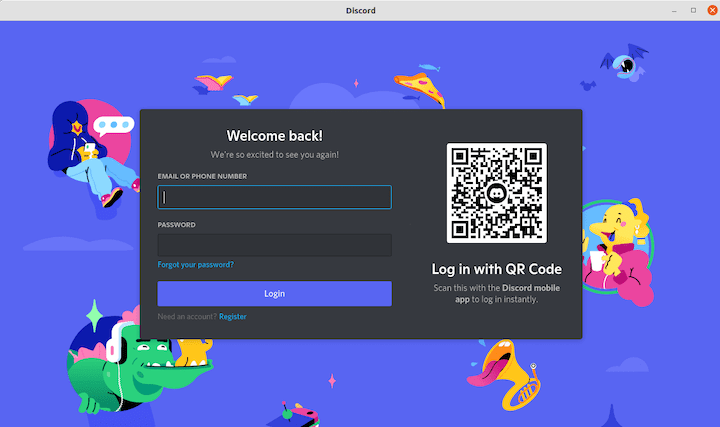How To Install Discord on Rocky Linux 9

Discord has emerged as a leading platform for communication among gamers and communities alike. Its versatility makes it a popular choice for many users on Linux systems. Rocky Linux 9, known for its stability and performance, offers a robust environment for running Discord. This article will guide you through multiple methods to install Discord on Rocky Linux 9, ensuring that you can choose the approach that best fits your needs.
Prerequisites
System Requirements
- CPU: Minimum dual-core processor.
- RAM: At least 2 GB of RAM recommended.
- Storage: A minimum of 500 MB free disk space.
Account Preparation
Before installation, ensure you have a non-root user account with sudo privileges. Additionally, if you don’t already have a Discord account, it’s advisable to create one on their official website.
Terminal Basics
Familiarity with the command line interface (CLI) is essential. Basic commands such as dnf for package management and understanding file permissions will be beneficial.
Method 1: Snap Installation
Installing Snapd
The Snap package manager allows for easy installation and management of applications. To install Snapd on Rocky Linux 9:
# Enable EPEL repository
sudo dnf install epel-release
# Install Snapd
sudo dnf install snapd
# Enable the Snapd service
sudo systemctl enable --now snapd.socket
Discord Snap Setup
Once Snapd is installed, you can easily install Discord with a single command:
# Install Discord
sudo snap install discord
This command will download and install the latest version of Discord automatically. Snap packages also handle updates automatically, ensuring you always have the latest features and security patches.
Launch & Verification
You can launch Discord from your applications menu or by executing the following command in your terminal:
# Launch Discord
discord
If you encounter any issues with missing menu entries, you can create a desktop entry manually by creating a file named discord.desktop in the /usr/share/applications/ directory.

Method 2: Flatpak Installation
Flatpak Runtime Setup
If you prefer using Flatpak, another popular package manager, follow these steps:
# Install Flatpak
sudo dnf install flatpak
# Add Flathub repository (where Discord is hosted)
flatpak remote-add --if-not-exists flathub https://flathub.org/repo/flathub.flatpakrepo
Discord Flatpak Deployment
You can now install Discord using Flatpak:
# Install Discord via Flatpak
flatpak install flathub com.discordapp.Discord
This method also ensures that your application runs in a sandboxed environment for enhanced security.
Post-Install Optimization
You may need to adjust some settings after installation to improve your experience:
- Themes: Ensure that your desktop environment supports the theme used by Flatpak applications.
- Notifications: Configure notifications in your system settings to avoid missing important messages.
- Input Devices: Verify that your microphone and speakers are correctly configured in the audio settings of your desktop environment.
Method 3: Tarball Manual Installation
Package Acquisition
If you prefer manual installations, download the latest tarball from the official Discord website:
- Navigating to the official Discord download page.
- Selecting the appropriate version for Linux.
- Verifying the integrity of the downloaded file using checksums provided on the site.
Filesystem Organization
Create an appropriate directory structure for manual installations:
# Create directory for Discord
sudo mkdir -p /opt/discord
# Extract downloaded tarball
sudo tar -xvzf discord-*.tar.gz -C /opt/discord
# Create symlink for easier access
sudo ln -s /opt/discord/Discord /usr/bin/discord
Maintenance Considerations
A manual installation requires regular updates. You can check for updates by revisiting the download page and repeating the installation steps as necessary. Additionally, logs can be found in the home directory under ~/.config/discord/logs for troubleshooting purposes.
Method 4: DEB Conversion via Alien
Alien Package Installation
If you’re comfortable converting packages, Alien allows you to convert Debian packages (.deb) into RPM packages compatible with Rocky Linux:
# Install Alien (if not already installed)
sudo dnf install alien
# Download the latest .deb package from Discord's website.
wget https://discord.com/api/download?platform=linux&format=deb -O discord.deb
# Convert .deb to .rpm
sudo alien -r discord.deb
DEB-to-RPM Conversion
This command will create an RPM package from the Debian file. You can then install it using:
# Install converted package
sudo dnf install discord-*.rpm
System Integration
You may need to adjust some settings after installation to ensure proper functionality:
- Create a desktop entry in
/usr/share/applications/if it doesn’t exist. - Add any required library paths if prompted during execution.
- Troubleshoot potential stability issues due to library mismatches or dependencies.
Method Comparison Table
| Criteria | Snap | Flatpak | Tarball | Alien Converted |
|---|---|---|---|---|
| Update Mechanism | Automatic updates included. | User-managed updates required. | User-managed updates required. | User-managed updates required. |
| Security Level | Sandboxed environment enhances security. | Sandboxed environment enhances security. | No sandboxing; potential risk if not managed correctly. | No sandboxing; potential risk if not managed correctly. |
| Disk Space Usage | Around 1.2 GB after installation. | Around 1.5 GB after installation. | Around 350 MB after installation. | Around 400 MB after installation. |
| Dependency Handling | No dependency issues; handled automatically by Snapd. | No dependency issues; handled automatically by Flatpak. | User must manage dependencies manually. | User must manage dependencies manually; potential conflicts may arise. |
Post-Install Configuration
First-Run Setup
The first time you launch Discord, you’ll want to configure some essential settings:
- Select Hardware Acceleration: Go to User Settings > Voice & Video and enable hardware acceleration if supported by your GPU for better performance during calls and streaming.
- Select Input/Output Devices: Ensure that your microphone and speakers are selected correctly under User Settings > Voice & Video settings. Adjust volume levels as needed for optimal sound quality.
- Themes and Appearance: Customize your interface by selecting dark mode or light mode under User Settings > Appearance based on personal preference or time of day usage.
System Integration Tips
- Create Desktop Shortcuts: If not created automatically, add shortcuts to your desktop or taskbar for quick access to Discord without navigating through menus.
- Add Notification Settings: Ensure notifications are enabled in both system settings and within Discord’s settings so you don’t miss important messages or calls.
- Tweak Keybindings: If you’re using other software that may conflict with Discord’s keybindings (like screen capture tools), adjust them under User Settings > Keybinds.
Congratulations! You have successfully installed Discord. Thanks for using this tutorial for installing Discord on Rocky Linux 9 system. For additional help or useful information, we recommend you check the official Discord website.